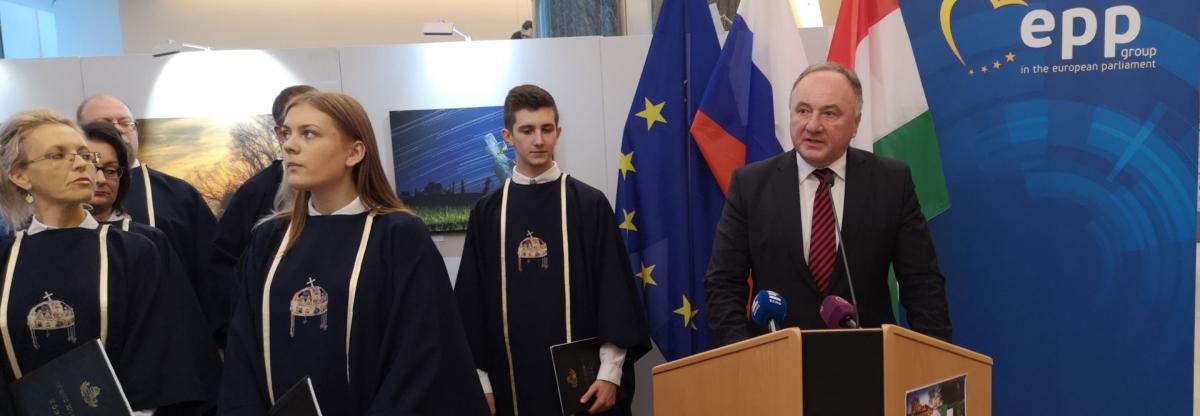
A photography exhibition is held to commemorate the past 100 years of the Hungarian minority in Slovakia at the European Parliament. Pál Csáky, SMK–MKP (Party of the Hungarian Community, Slovakia) MEP (Member of the European Parliament), has organised the exhibition presenting eight amateur photographers’ photos in Brussels in order once again to draw the attention of the European Union to the situation of autochthonous national minorities. Chairman of Hungarian Parliament's Foreign Affairs Committee Zsolt Németh opened the exhibition at its opening ceremony.
Pál Csáky hosted the opening of the exhibition and explained the historical reason behind the idea of organising the event: ‘The First World War ended a hundred years ago, and the fate of a minority has been imposed on us for a century. I see that Romanians are revelling in celebrations, South Slavs are also celebrating, Czechs are commemorating, and Slovaks have brought up the issue in a low-key and contradictory fashion. I can't help but feel that we Hungarians should not remain silent and show the world how important the 100-year-old unresolved situation of the torn-apart Hungarian communities is and that our situation ought to be resolved by guaranteeing different forms of autonomy. I’ve released a five-lingual publication on this subject, which is now distributed among my MEP colleagues. That is why a concert was staged in the cathedral of Brussels on Monday and the exhibition on the Hungarian-populated areas of Slovakia is held at the European Parliament. We should not let Europe forget about us and draw again and again the decision makers' attention to our situation yet to be resolved.’
‘This exhibition is about the Slovakian Hungarians’ patriotism and localism. The exhibition aims to draw the attention of the EU Member States’ representatives to the little-known fact that the Hungarians have been living in the neighbouring countries over a hundred years because the borders of the country were redrawn, by going over their heads, a hundred years ago. The exhibition also aims to draw attention to the fact that the situation of autochthonous national minorities is far from resolved in the EU. The situation differs from Member State to Member State, as in practice it is left to the Member States’ discretion to decide on how to treat their minorities,’ Zsolt Németh stressed in his speech. Mr. Németh also said that the EU rightly imposes high requirements on acceding States in terms of the protection of minorities, but it should impose the same requirements on the Member States.
‘The Union is hypocritically placing the issue of national minorities in the category of bilateral relations. Although the bilateral agreements have not been working well for a hundred years. Our aim is to oblige the European Union to include the standards and recommendations reflected in the documents of the Council of Europe (CE), the Organisation for Security and Cooperation in Europe (OSCE), and the UN in the EU law. It would mean the legal settlement of the issue of minorities in Europe, by making infringements sanctionable. Our EU Citizens' Initiative submitted to the European Commission last year, namely the European minority protection initiative (Minority SafePack), has also been intended precisely for this purpose. Besides majority societies, the autochthonous minorities in Europe have also contributed to the building of a thousand-year-old culture, only unfortunately their rights have been diminished. Therefore, unless the European Union wishes to lose credibility, it should offer a high level of protection to the autochthonous minorities in Europe,’ the Chairman of the Parliament's Foreign Affairs Committee stressed.
(www.mkp.sk, 17 Oct 2018)



